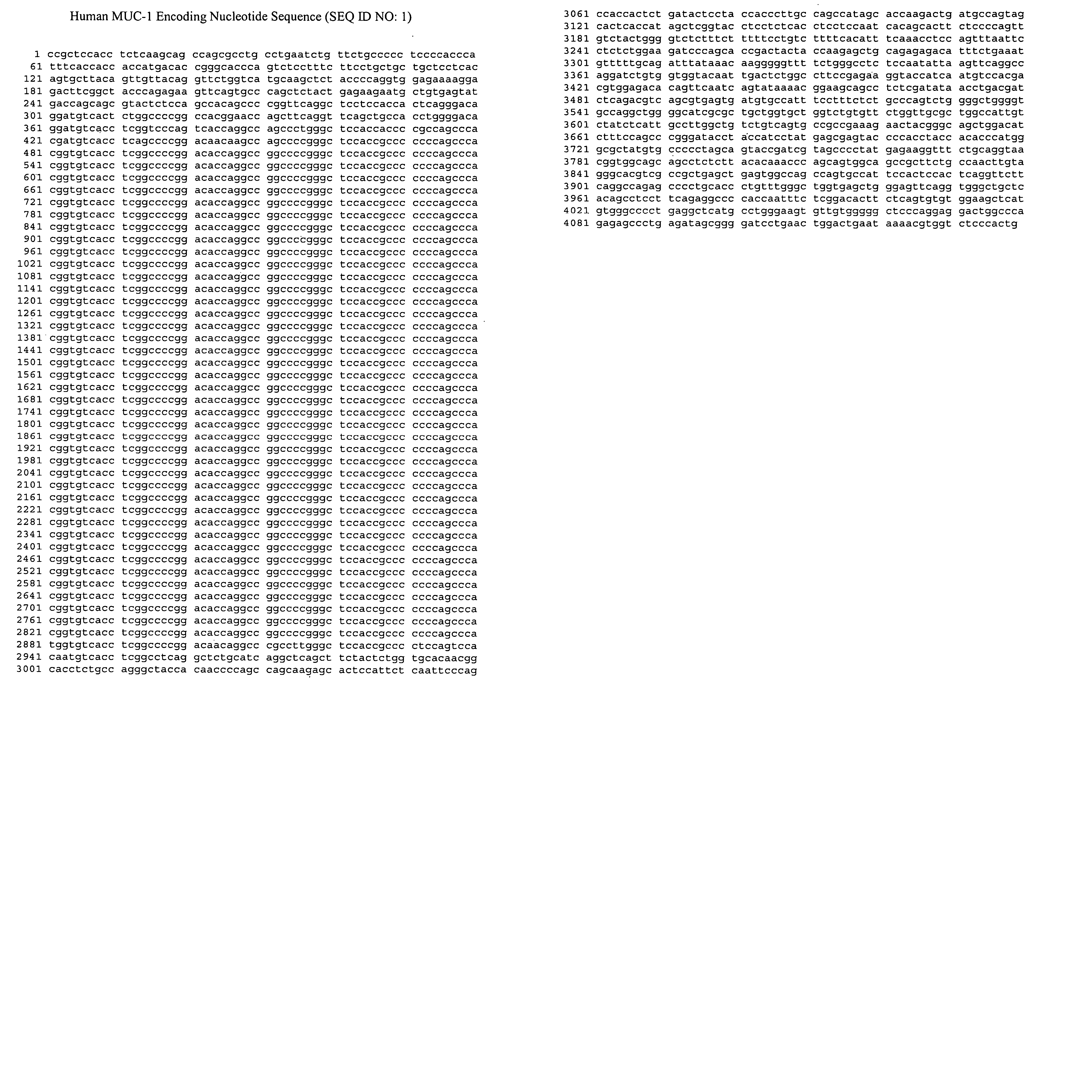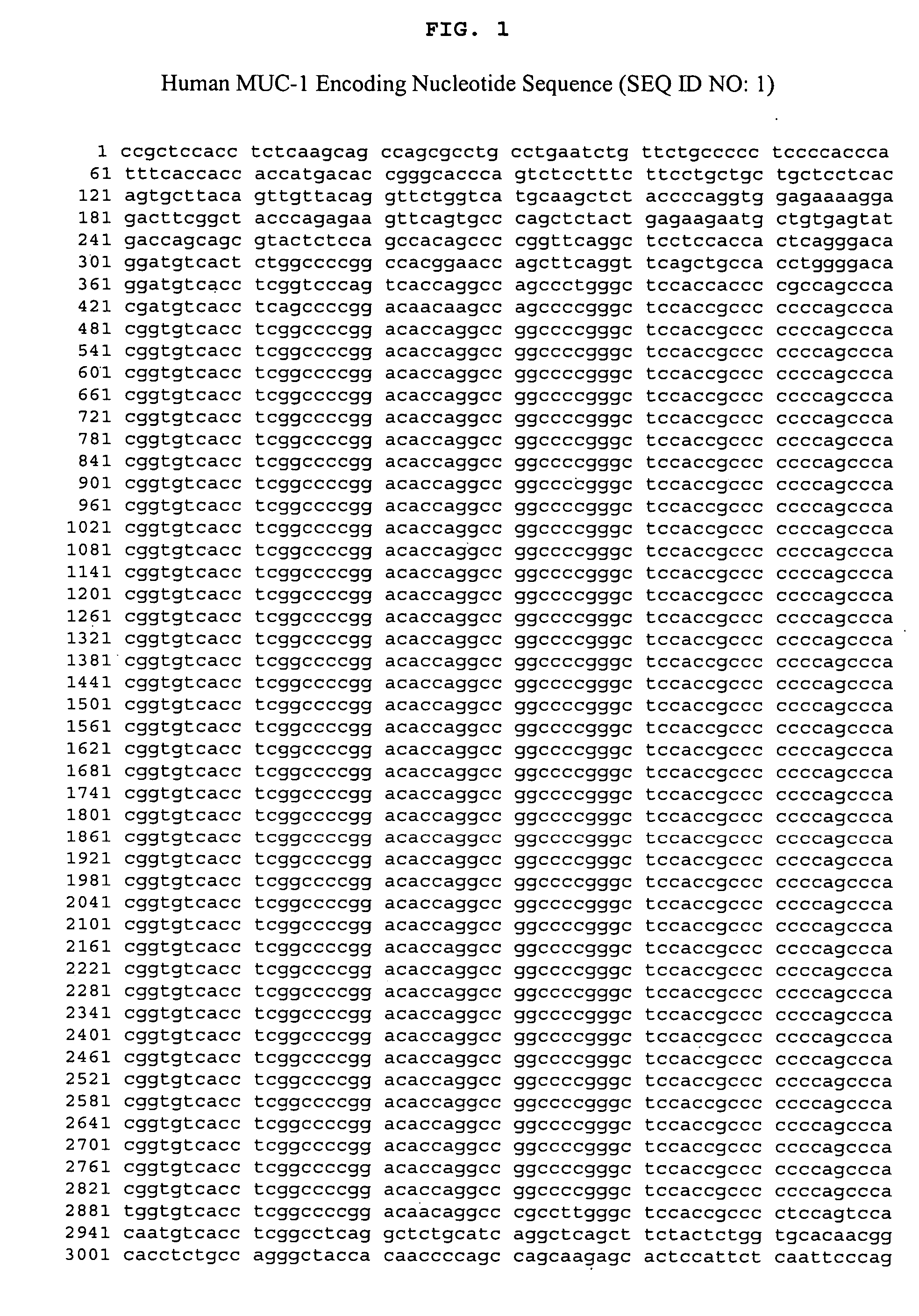Mucin antigen vaccine
a technology of mucin and antigen, applied in the field of mucin antigen vaccine, can solve the problems of peripheral deletion of ag-specific t cells in regional lns, insufficient expression of surface activation molecules of apcs, and anergy of t cells, and achieve the effect of increasing the immune respons
- Summary
- Abstract
- Description
- Claims
- Application Information
AI Technical Summary
Benefits of technology
Problems solved by technology
Method used
Image
Examples
examples
[0068] 1. Construction of Adenoviral Expression Vectors
[0069] The transcription unit, sig-ecdhMUC1-ΔCtΔTmCD40L of the adenoviral vector encodes a signal sequence (from an Ig kappa chain) followed by the extracellular domain of human MUC1 which is connected via a linker to a fragment of the CD40 ligand (human or mouse) which contains the extracellular domain without the transmembrane or cytoplasmic domains. The fusion protein was engineered to be secreted from vector infected cells by the addition of the kappa chain signal sequence to the amino-terminal end of the fusion protein.
[0070] The amino acid sequence of human MUC-1 and the encoding nucleotide sequence are shown in FIGS. 2 and 1, respectively. The encoded MUC1 protein represents 1255 amino acids encoded by nucleotides 74 to 3,841 of SEQ ID NO: 1. The first 23 amino acids (encoded by 74 to 142 of SEQ ID NO:1) represent the MUC1 signal sequence which is removed from the mature mucin. The extracellular domain represents about ...
PUM
| Property | Measurement | Unit |
|---|---|---|
| adhesion | aaaaa | aaaaa |
| length | aaaaa | aaaaa |
| hydrophobic | aaaaa | aaaaa |
Abstract
Description
Claims
Application Information
 Login to View More
Login to View More - R&D
- Intellectual Property
- Life Sciences
- Materials
- Tech Scout
- Unparalleled Data Quality
- Higher Quality Content
- 60% Fewer Hallucinations
Browse by: Latest US Patents, China's latest patents, Technical Efficacy Thesaurus, Application Domain, Technology Topic, Popular Technical Reports.
© 2025 PatSnap. All rights reserved.Legal|Privacy policy|Modern Slavery Act Transparency Statement|Sitemap|About US| Contact US: help@patsnap.com



